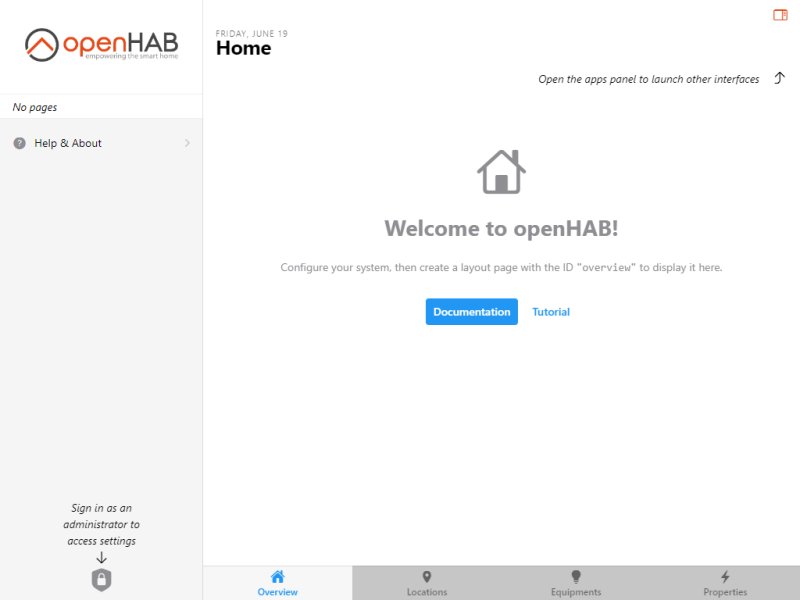openHAB has released version 5.2.0 of its open-source home automation platform, which allows users to unify and control a wide range of smart devices. Designed to be flexible and privacy-focused, openHAB enables users to create a customized smart home environment without being tied to specific ecosystems or manufacturers. This makes it suitable for both casual users and technology enthusiasts who value control and data privacy.
Users can automate various tasks such as lighting, watering lawns, or preparing coffee at specific times. To get started, openHAB can be installed on a computer, laptop, or even a Raspberry Pi, but requires JAVA and compatible smart devices. The platform supports numerous devices, including smart plugs, bulbs, sensors, and thermostats, and is compatible with protocols like Zigbee, Z-Wave, and MQTT.
Setting up the platform involves installing the software based on the operating system, with instructions provided for Windows, macOS, Linux, and Raspberry Pi. Users can enhance functionality through modular add-ons known as bindings, which facilitate integration with various devices and protocols. The process of adding devices is straightforward, but openHAB's extensive capabilities may require some technical knowledge to fully utilize.
openHAB is community-driven, offering active forums and documentation to assist users in setting up and troubleshooting their systems. Although it has a steeper learning curve than typical smart home solutions, it provides substantial flexibility and privacy for those willing to invest the time to learn its intricacies.
Extension:
The latest version of openHAB not only enhances existing functionalities but also introduces new features that streamline the setup process, making it more user-friendly. For instance, improved user interfaces and guided wizards can help new users navigate through installations and configurations more easily.
Additionally, openHAB's integration capabilities have expanded, allowing for easier connections with emerging smart home devices and innovative technologies, such as voice assistants and IoT devices. Future updates may focus on increasing compatibility with more manufacturers and enhancing the performance of existing bindings.
Furthermore, as smart home technology continues to evolve, openHAB is well-positioned to adapt, ensuring users can take advantage of new advancements while maintaining their privacy and control. The platform not only caters to DIY enthusiasts but also has the potential to be embraced by developers looking to create their own smart home applications, fostering a vibrant ecosystem around open-source home automation.
In summary, openHAB 5.2.0 represents a significant step forward for open-source home automation, offering a robust and flexible solution for users who value privacy and customization in their smart home setups
Users can automate various tasks such as lighting, watering lawns, or preparing coffee at specific times. To get started, openHAB can be installed on a computer, laptop, or even a Raspberry Pi, but requires JAVA and compatible smart devices. The platform supports numerous devices, including smart plugs, bulbs, sensors, and thermostats, and is compatible with protocols like Zigbee, Z-Wave, and MQTT.
Setting up the platform involves installing the software based on the operating system, with instructions provided for Windows, macOS, Linux, and Raspberry Pi. Users can enhance functionality through modular add-ons known as bindings, which facilitate integration with various devices and protocols. The process of adding devices is straightforward, but openHAB's extensive capabilities may require some technical knowledge to fully utilize.
openHAB is community-driven, offering active forums and documentation to assist users in setting up and troubleshooting their systems. Although it has a steeper learning curve than typical smart home solutions, it provides substantial flexibility and privacy for those willing to invest the time to learn its intricacies.
Extension:
The latest version of openHAB not only enhances existing functionalities but also introduces new features that streamline the setup process, making it more user-friendly. For instance, improved user interfaces and guided wizards can help new users navigate through installations and configurations more easily.
Additionally, openHAB's integration capabilities have expanded, allowing for easier connections with emerging smart home devices and innovative technologies, such as voice assistants and IoT devices. Future updates may focus on increasing compatibility with more manufacturers and enhancing the performance of existing bindings.
Furthermore, as smart home technology continues to evolve, openHAB is well-positioned to adapt, ensuring users can take advantage of new advancements while maintaining their privacy and control. The platform not only caters to DIY enthusiasts but also has the potential to be embraced by developers looking to create their own smart home applications, fostering a vibrant ecosystem around open-source home automation.
In summary, openHAB 5.2.0 represents a significant step forward for open-source home automation, offering a robust and flexible solution for users who value privacy and customization in their smart home setups
openHAB 5.2.0 released
openHAB is an Open-Source home automation platform that lets you unify and control various smart devices and gadgets.


